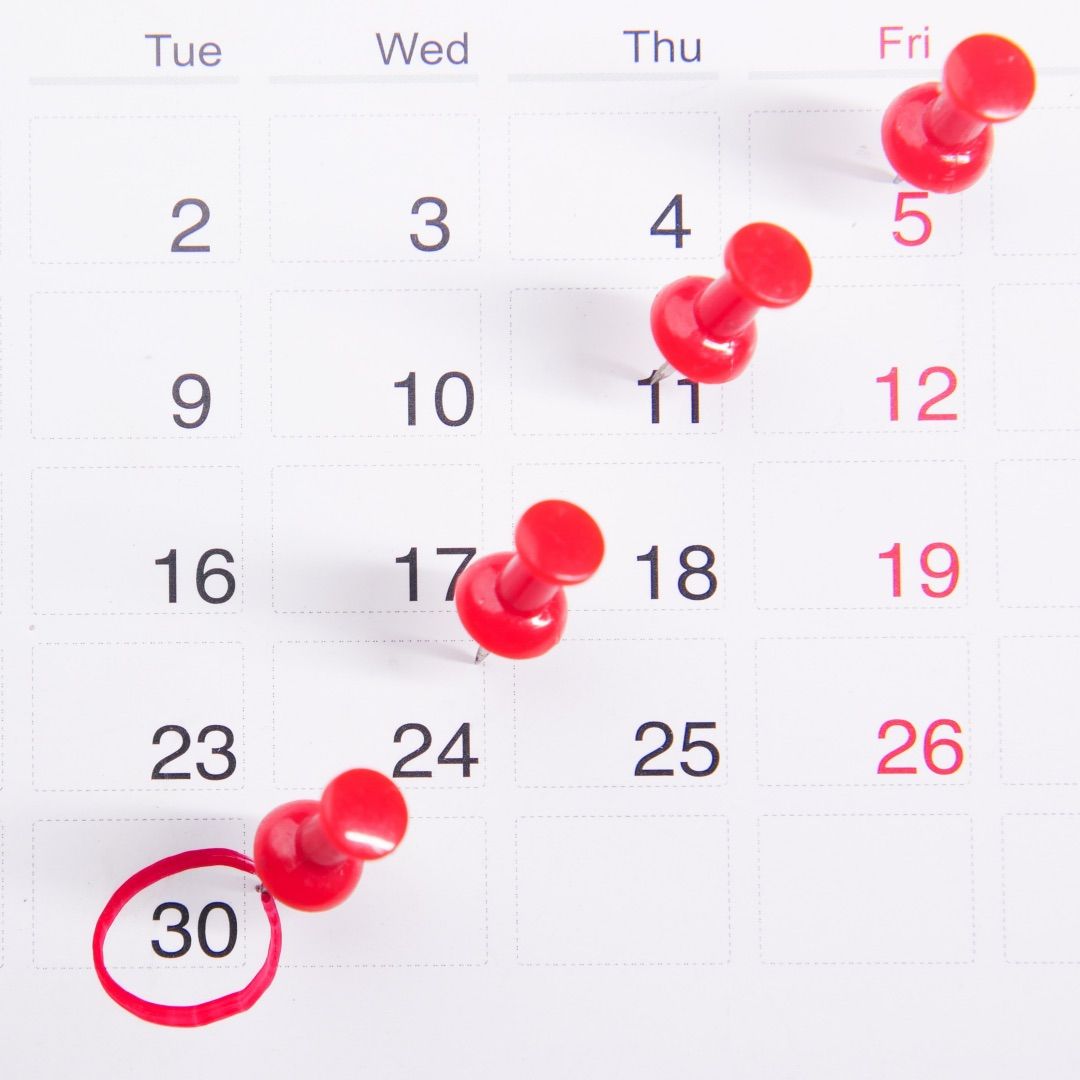When it comes to managing projects, there are certain things you need to know. One of those is the specific deadline for the project. If you don't have a certain date for when a project or a task needs to be completed, there are going to be issues with the entire project. You might have one expectation while your client has another. And it can often lead to frustration and delays. Therefore, freelancers should learn how to ask for a deadline.
In this article, we will be discussing how you can approach a project manager and ask them for a due date for a project or task without offending them or being ignored. In addition, we will also tell you how Indy can help you manage your workload so you can keep track of those deadlines and projects for a better work-life balance.
Understanding the Context
When it comes to sending an email to a team leader, it is best to look at the context of the project and the request you're making. Therefore, you should consider three aspects.
Assess the urgency and importance of the task
The first thing you need to do is understand the context of the work. How important or urgent is the request? Is the task they've assigned you preparation work for another project in the future but they would like the research done ahead of time? Or is this a task that is going to hold up another project and needs to be completed urgently?
One of the best questions to determine the urgency of a task is to ask: "If this is not done, what will/won't happen?" If the answer is that another project can’t progress, then it is pretty important. If the answer is nothing, then it is probably a low priority.
Identify key stakeholders and decision-makers involved
If you want to get the deadline answer quickly, you need to speak to the decision maker. The project manager is normally the best person to speak to, as they will often be your point of contact. Don't speak to a member of their team—they might not know what is going on fully and therefore may not be able to help you.
Though, there might be times when you need to ask someone like a subtask leader when they need something in by. So have a database of all the contacts within the business and determine who is the right point of call for each job.
Familiarize yourself with the organization's culture and communication style
It is also important that you consider the structure of your client's business. Who is in charge, and what are their policies on communication? For instance, they might have a single email address that is forwarded to the project management team. Or you might need to email the lead directly, but they only respond to emails at certain times.
They might, for example, have a continuing professional development (CPD) time, such as on a Thursday afternoon, or they might have meetings on a Monday morning, so these are not the times to contact the team lead. Usually, you should know these times from initial conversations with the client.
Preparing to Ask for a Deadline
When it comes to requesting the details for the specific deadline, there are a few steps you can take to make the process much easier. Here are the steps you need to follow.
Plan and organize your email request
The first thing you need to do is plan and organize what you want to say. What is the information you need? Rarely will you need to know when the project deadline is without the client telling you, but you might want to know the due date for specific parts of the project.
For example, you might have a job for a long sponsorship campaign on your TikTok channel. However, there are several moving parts to this. You might need to get the client feedback before you release the content, so you want to know when the latest date is that they would like the content, to give them time to review everything.
Once you have that information, you can move on to other matters, such as when to film the content and more.
Gather relevant information and resources
Now you need to gather the relevant information and resources that you will need for the request. For example, if you need to have feedback for some content, then determine when the latest is that you can collect this to make changes to the content before the final deadline.
Establish a clear understanding of the task requirements
Next, ensure you know everything that you need to complete the task. For instance, are there resources or decisions you need from the project lead? Do you need to wait for another freelancer to complete a subtask so you can continue to your section?
It is really important to know what you need. That way, when you ask for a deadline, you can be sure that you're getting the resources you need to complete the task.
Writing the Email
Now you need to start writing the email to request the deadline details from your business partner. Here are the steps to take when writing your email.
Open the email with a polite and professional greeting
First, open the email with a polite and professional greeting. Don't be too formal at this point if you know the person. For example, if you have spoken to the individual a few times, then you might want to start with 'Hi'.
If you don't know the person, for instance, you've been dealing with a project lead before and now you need to speak to the director, then you start with 'Dear'. Then you should include their name.
Avoid using the terms like Sir, Ma'am, or other titles that can be very impersonal.
Express appreciation for the opportunity and trust
Next, express appreciation for working with them and the trust they've put in you for getting the job done. There are lots of ways that you show appreciation, but don't let it take up too much space on the email. A line will do.
State the purpose of the email clearly and concisely
Now state the purpose of your email. Be clear and concise; there should be no room for interpretation by the reader. For instance, if you're looking for a deadline for a specific task/subtask, you need to reference that. Again, you don't want this section to be too long. Instead, you want to cover this element within a sentence or two.
Provide necessary context and background information
Now you need to provide the necessary context and background information. Examples might include detailing that a task needs to be completed before another section of the work can go forward. Or that you need some information to assign tasks and schedule your workload.
Request the deadline with politeness and flexibility
Now is the time to request the deadline for the project. You need to request it with politeness. Using a phrase like "at your earliest convenience" might be good for this section. Try not to use terms like "asap" because this can seem rushed, and the decision maker will likely have lots of other work to do, which might take priority over your email.
You might also want to have a suggested date in the email. However, be sure to add a couple of days to the request. Most of the time, project leaders want to have things quicker.
Offer assistance and ask for clarification (if needed)
You should always offer the project manager a chance to ask questions or for assistance. This can be a simple line like "If you need more information or have questions, please feel free to reach out to me."
Express gratitude and close the email on a positive note
At the end of the email, remember to thank the person again and express gratitude for their time. And always end on a positive note, like "looking forward to your response."
Politeness Tips for Email Communication
There are so many tips you might want to add to your email communication. Here are the best tips for you to follow.
Use appropriate language and tone
Be sure to use the most appropriate language and tone in all emails. Everything should be formal, but not so formal that it can seem stilted. If you're unsure, try to mirror the language used in any document the business has provided you or any emails you've received from the company.
Avoid aggressive or demanding language
Remember that you're there to service them. Therefore, you should avoid using any aggressive or demanding language. Using phrases like "I need this by tomorrow" or "asap" can often be seen as demanding.
If there is a real need for urgency, you might need to speak to the person on the telephone or in person.
Use "please" and "thank you" appropriately
Remember to always use the phrases "please" and "thank you," but don't overdo the process. And don't apologize excessively.
Be mindful of the recipient's time and workload
Remember that the other person isn't waiting around for you. They will have their own workloads and limited time. Therefore, don't use "asap" unless you need the information quickly, in which case you're probably best speaking to them on the phone.
Following Up on the Deadline Request
If after a week or a few days you've not had a response, then you might need to do a follow-up email.
Give the recipient adequate time to respond
It is important to remember there is different email etiquette to consider when it comes to sending emails. You might need to wait a week before you can send the email. Though it does depend on the culture. In Japan, for instance, it is customary to respond to emails much faster.
Send a polite reminder if necessary
Remember to always be polite when it comes to sending a reminder email. You want to use phrases that are pleasant and not demanding. It might be best to apologize for having to follow up, but there are important details you need to complete the work.
Offer alternatives or propose solutions, if applicable
At the end of the email, you might need to offer them an alternative or propose solutions. Sometimes someone doesn't respond because they don't have an answer or enough information but don't know how to articulate that.
How Indy Can Help
Working as a freelancer is an exciting career. However, it is also hard. You have to post social media content, meet new clients, create work, send invoices, and do lots of other tasks involved. That is why Indy is there to help you get the most from your time with nine tools, templates, and invoicing solutions to ensure you can organize your time to be more effective and efficient. Some of the tools that Indy offers include:
- A work management tool that can include deadlines for the weeks ahead. You can share this with relevant people so they know what they need to do.
- CRM software to help you keep the data of all your contacts from clients. You can also collect the information with a form builder that can be embedded on social media, email, or your website.
- Indy University with templates for emails and other communications that you can edit and then send to the relevant individual.
Indy has all the tools you need in one place to ensure you are managing your time efficiently. In addition, you can access all of this for free, with three contracts per month. Or you can get unlimited access with a Pro account.
Conclusion
Speaking to a company about the deadline for a project is important. You need these timelines so you can progress with the tasks. Sending an email is sometimes the best way to get the information. Above are the tips and systems you need to ensure you get the information you require.
To help, you can use Indy, a freelancer tool that can help you throughout the contract's lifetime with support for proposals, managing projects, and getting paid. Try the free account today.




